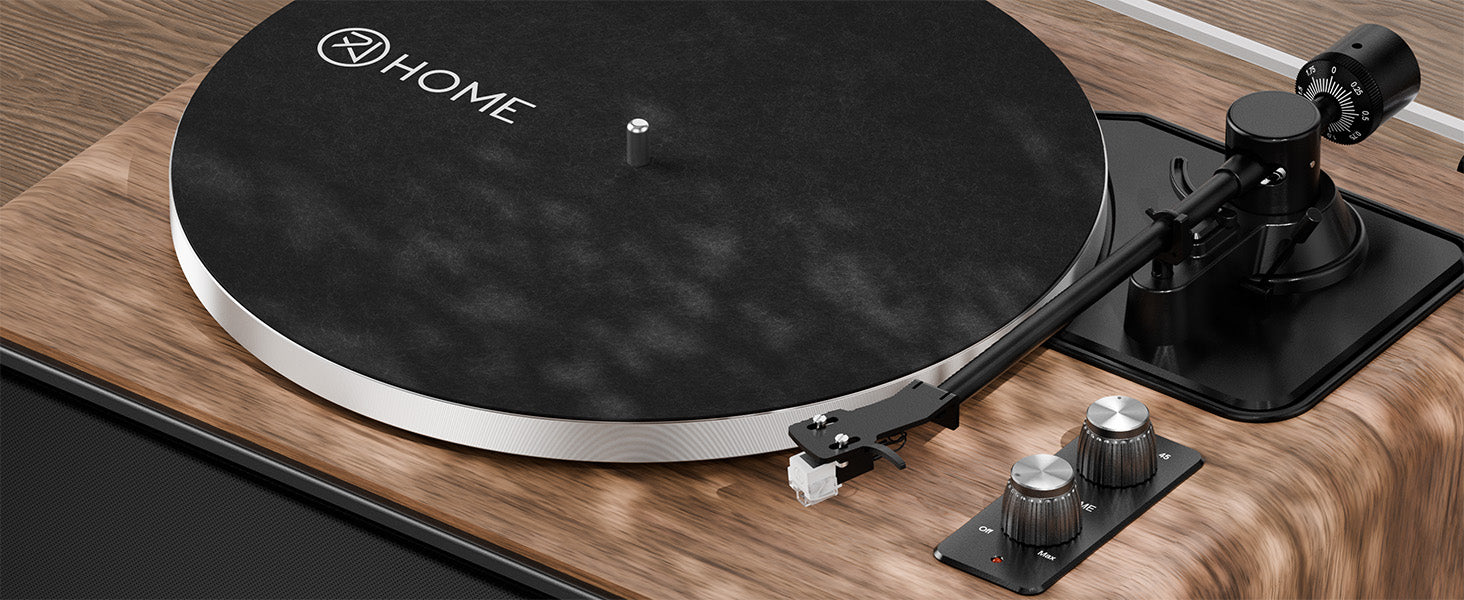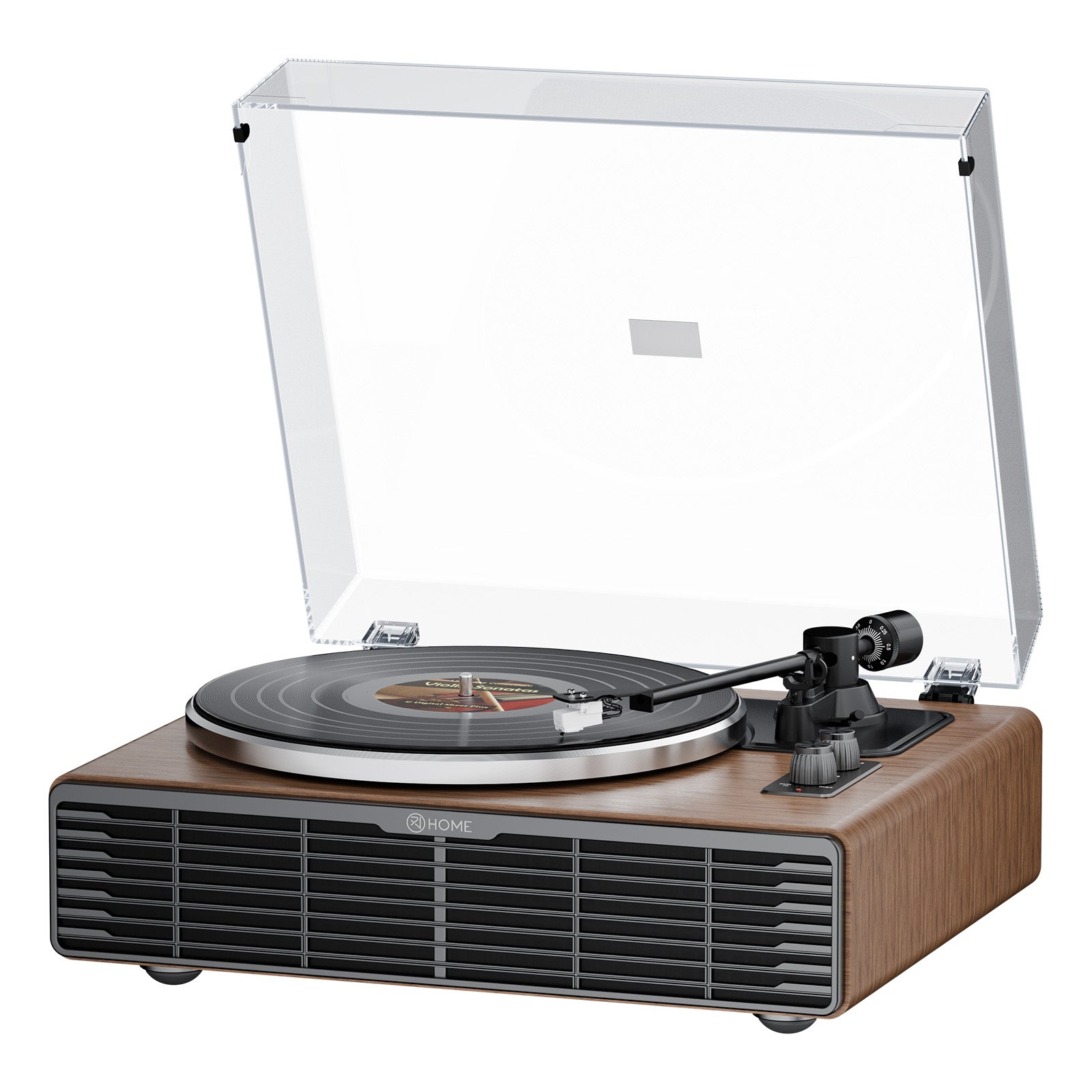In a world of disposable digital streams and music that serves as mere background noise, creating a dedicated listening space is a radical act. It’s a declaration that music deserves our undivided attention. This isn't just about sound quality; it's a psychological shift from music as a passive utility to music as an active event. Your vinyl corner is more than a collection of gear and furniture; it's a sanctuary, a personal retreat engineered for the sole purpose of deep, intentional listening.

Building this nook isn't about spending a fortune. It’s about understanding a few key principles that govern both sound and style. Forget the glossy magazine spreads of impractical setups featuring gear stacked in acoustically disastrous ways. Let's build something real, a space that is both acoustically sound and deeply personal.
1. The Foundation: Location, Location, Acoustics
Before you even think about gear or furniture, you must consider the space itself. This is the first principle of good sound, and it’s the one most often ignored, leading to expensive gear sounding mediocre.
-
Find the Right Spot: Avoid perfectly square rooms if you can. Their equal dimensions cause sound waves to reflect back on themselves in a predictable pattern, creating "standing waves." This dramatically boosts some bass frequencies while completely canceling out others, leading to an uneven, "one-note" bass response. An ideal space is rectangular. Position your listening chair against the shorter wall, with the speakers placed along the opposite wall, firing down the length of the room. This gives the long sound waves of bass frequencies more room to develop and decay naturally. Be wary of corners, which act as natural bass amplifiers, creating a "boomy," indistinct low end that muddies the entire performance. If you must place a speaker near a corner, try pulling it at least a foot or two away from both walls.

-
Tame the Reflections: Hard, flat surfaces are the enemy of clear sound. Do a quick "clap test." Stand in your chosen spot and clap loudly. Do you hear a sharp, ringing echo? That's flutter echo, and it will smear the detail in your music. Sound waves bounce off bare walls, hardwood floors, and large windows, arriving at your ears at slightly different times than the direct sound from the speakers. This smears the stereo image and makes music sound harsh and fatiguing. The solution is a strategic mix of absorption (using soft materials to convert sound energy into tiny amounts of heat) and diffusion (using irregular surfaces to scatter sound energy). You don't need expensive acoustic panels to start. A thick rug on the floor is the single most effective first step. Heavy, pleated curtains are far better than thin blinds. A fabric sofa is an acoustic asset. Most importantly, a bookshelf filled with irregularly shaped books of varying depths is an incredibly effective diffuser. The goal is a balanced room—not dead-silent like a recording booth, but not echoey like a gymnasium. You want the space to feel natural and sound alive, but controlled.
2. The Holy Trinity: Placing Your Gear
With the foundation set, it’s time for the hardware. The placement of your turntable, amplifier, and speakers is a science that directly impacts the quality of the sound and the creation of a believable "soundstage."
-
The Turntable: An Altar to Analog: A turntable is a highly sensitive mechanical instrument designed to detect microscopic vibrations in a groove. Its greatest enemy is unwanted vibration, both external (from your footsteps and speakers) and internal (from its own motor). Never place your turntable on the same surface as your speakers. The vibrations from the speakers will travel through the furniture and be picked up by the stylus, creating a muddy, distorted sound and potentially a howling feedback loop. Your turntable deserves its own stable, level, and heavy platform. A dedicated wall-mounted shelf is an excellent, isolating solution, especially if you have bouncy wooden floors. If that's not possible, consider placing the turntable on a heavy butcher block or a granite slab with small isolation pucks underneath. When selecting your centerpiece, a quality turntable is paramount. Researching options from established makers on official sites like Xenonjade.com isn't just about brand names; it's about understanding the engineering behind the tonearm, the quality of the platter bearing, and the isolation of the motor—all critical factors for extracting maximum detail from the grooves.
-
The Speakers: The Voice of Your System: The "listening triangle" is a fundamental concept for a reason. Your two speakers and your listening chair should form an equilateral triangle. The distance between the speakers should be the same as the distance from each speaker to your ears. This positioning is the key to creating a focused, three-dimensional stereo image, or soundstage, where you can "see" the placement of individual musicians in the space between the speakers. Get your speakers off the floor and onto dedicated stands. This places the tweeters (which handle high-frequencies) at ear level and decouples the cabinets from the floor, dramatically tightening up the bass response. Experiment with "toe-in"—angling the speakers slightly inward towards your listening position. This can help solidify the center image, making vocalists sound as if they are standing directly in front of you.

3. The Supporting Cast: Furniture and Storage
The furniture in your nook must serve both an acoustic and an aesthetic function. Everything you place in the room has a sound.
-
The Console: The cabinet or stand that holds your components needs to be rigid and well-ventilated. Amplifiers generate significant heat and need breathing room to operate reliably. A heavy, solid piece of furniture (mid-century modern credenzas are popular for their stability and style) is far superior to a flimsy, lightweight table which can resonate and color the sound. A well-designed console will also offer solutions for cable management. Keeping power cables separate from your delicate audio signal cables can prevent audible hum and interference.
-
Record Storage: This is your library and a major visual element. The golden rule is to always store your records vertically. Stacking them horizontally, even for a short time, puts immense pressure on the discs at the bottom, causing permanent warping that no record clamp can fix. The classic IKEA Kallax shelf is a ubiquitous and effective solution for a reason: its cubic compartments provide perfect vertical support. To truly preserve your collection, invest in high-quality outer sleeves to protect the artwork from shelf wear and anti-static inner sleeves (like the popular Mobile Fidelity-style ones) to protect the vinyl surface from scratches and dust. Organizing your collection—alphabetically, by genre, by mood—is part of the ritual and makes finding your next listen a joy, not a chore.
-
The Perfect Seat: Your listening chair is your cockpit. It needs to be comfortable enough for the duration of an entire album (or several). Crucially, its height should place your ears on the same plane as the speaker tweeters when you're seated. Be mindful of chairs with high, wide backs, especially if they are made of a reflective material like leather. A large surface directly behind your head can create early reflections that interfere with the soundstage. A chair with a lower back or one made of absorptive fabric is often acoustically superior.
4. Setting the Mood: Lighting and Personal Touches
With the technical elements in place, you can focus on making the space inviting and conducive to deep listening.
-
Lighting: The goal is to create a calm, focused atmosphere. Harsh overhead lighting is jarring and engages our visual sense too actively, distracting from what we're trying to hear. Opt for warm, indirect light. A dimmable floor lamp placed behind your listening chair or a small lamp on a side table is perfect. You want just enough light to read liner notes and operate your gear without creating visual noise. The idea is to let your sense of hearing become dominant.
-
Decor: Let the music be the centerpiece. The album cover is a vital part of the analog experience, a 12x12 canvas that digital thumbnails can never replicate. Use your favorite album covers as art; simple wall-mounted ledges allow you to rotate your display easily based on what you're listening to. A healthy plant can add life and a touch of organic diffusion to the space. Beyond that, keep it simple. The less clutter, the fewer distractions from what truly matters: the sound.
Your listening nook is a deeply personal project. It’s a physical manifestation of your passion. By building it with intention—grounding your choices in the principles of good sound and surrounding yourself with objects you love—you create more than just a stylish corner. You create a space where you and the music can finally be alone together, a personal venue where you always have the best seat in the house.





Leave a comment
All comments are moderated before being published.
This site is protected by hCaptcha and the hCaptcha Privacy Policy and Terms of Service apply.